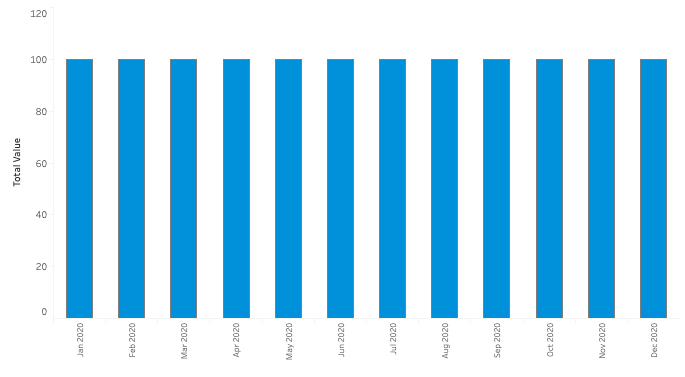
Here at Web Rover, we make it possible to look up jobs data on even the most minute job levels, including types of jobs, industries, employers, cities, and more. Our tool is designed to make it possible to analyze this type of highly valuable data in order to make it possible for recruiters and companies to track trends, look for opportunities, and stay ahead.
Most of the time, when you request data via our tool, you’re given some very useful results. But there are other times where your data will basically look like this:
Clearly, this is useless.
Or is it?
That’s the thing about data. It answers your question. If your data doesn’t appear useful at first, it could mean any number of different things:
- “No Difference” Is An Answer – One thing to remember is that “no difference” is an answer to a question. If I asked “how have trends in engineering jobs changed over the last 12 months” and I receive data that shows no change, then that is the answer to my question. It’s not useless. It’s accurate, and tells me that the industry is steady but not necessarily growing.
- “Equal” Doesn’t Mean “No Difference” – Another thing to remember is that equal results do not necessarily mean that there is no change. For example, if I were to compare hospitality job openings in 2021 with hospitality job openings in 1995, and the number turns out the same, that would actually be a shocking result. There are 26 million people in Australia today, and only 18 million in 1995, so an equal result would actually have quite a bit of meaning.
- Asking the Wrong Questions – If the data appears useless and uninteresting, the problem may be the question, and the similar data is telling you that you need to be more specific to find your answers. For example, if I look for job trends across all of Australia, and the data looks like everything is the same, perhaps I can find specific information if I look for a specific place, such as “in Sydney.”
Sometimes, the issue is as simple as knowing what constitutes a trend. In May of 2021, there were 265,397 job openings in total. In April, there were 247,183. Those numbers appear somewhat similar because they’re so large. But if you knew that, for example, there was traditionally no change at all, then the difference between those two numbers would appear to be a significant increase.
As you can see, even “useless” results have plenty of uses, meanings, and more. Every bit of data tells a story, and in a way, there is no such thing as results that are useless – everything you do answers an important question.